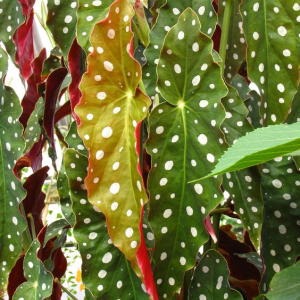- English
- Chinese
- French
- German
- Portuguese
- Spanish
- Russian
- Japanese
- Korean
- Arabic
- Irish
- Greek
- Turkish
- Italian
- Danish
- Romanian
- Indonesian
- Czech
- Afrikaans
- Swedish
- Polish
- Basque
- Catalan
- Esperanto
- Hindi
- Lao
- Albanian
- Amharic
- Armenian
- Azerbaijani
- Belarusian
- Bengali
- Bosnian
- Bulgarian
- Cebuano
- Chichewa
- Corsican
- Croatian
- Dutch
- Estonian
- Filipino
- Finnish
- Frisian
- Galician
- Georgian
- Gujarati
- Haitian
- Hausa
- Hawaiian
- Hebrew
- Hmong
- Hungarian
- Icelandic
- Igbo
- Javanese
- Kannada
- Kazakh
- Khmer
- Kurdish
- Kyrgyz
- Latin
- Latvian
- Lithuanian
- Luxembou..
- Macedonian
- Malagasy
- Malay
- Malayalam
- Maltese
- Maori
- Marathi
- Mongolian
- Burmese
- Nepali
- Norwegian
- Pashto
- Persian
- Punjabi
- Serbian
- Sesotho
- Sinhala
- Slovak
- Slovenian
- Somali
- Samoan
- Scots Gaelic
- Shona
- Sindhi
- Sundanese
- Swahili
- Tajik
- Tamil
- Telugu
- Ukrainian
- Urdu
- Uzbek
- Vietnamese
- Welsh
- Xhosa
- Yiddish
- Yoruba
- Zulu
- Kinyarwanda
- Tatar
- Oriya
- Turkmen
- Uyghur

พืชตกแต่งยอดนิยมที่มีความงามของดอกไม้ที่ยอดเยี่ยมและเฉดสีใบไม้ที่อุดมสมบูรณ์คือ ต้นด่าง. มีการใช้กันอย่างแพร่หลายในการตกแต่งภายในและเตียงดอกไม้กลางแจ้ง และเป็นพื้นฐานในการทำสวน ในบรรดาองค์ประกอบหลายประการ ความหลากหลาย สภาพแวดล้อม การดูแล และการจัดการมีอิทธิพลต่ออัตราการพัฒนาของต้นดาดตะกั่ว

อ้อย begonia
คุณสมบัติของการเติบโตของต้นด
บีโกเนียประกอบด้วยหลายสายพันธุ์และหลากหลาย ดังนั้นพืชแต่ละชนิดจึงมีลักษณะการเจริญเติบโตที่แตกต่างกัน โดยทั่วไปแล้ว รูปแบบการเจริญเติบโตตามธรรมชาติของบีโกเนียและสภาพแวดล้อมทางวัฒนธรรมมีอิทธิพลต่อทั้งการพัฒนาและรูปแบบของบีโกเนีย วงจรการเติบโตของบีโกเนีย ความยืดหยุ่น และอัตราการเติบโตที่หลากหลาย เป็นตัวกำหนดลักษณะของการพัฒนา
วงจรการพัฒนา
นอกจากการงอกของเมล็ด การพัฒนาของต้นกล้า การสุก และการออกดอกแล้ว วงจรการเติบโตของบีโกเนียยังประกอบด้วยขั้นตอนต่างๆ ปัจจัยด้านสิ่งแวดล้อมและการดำเนินการบำรุงรักษาอาจส่งผลต่อความยาวและจังหวะของการพัฒนาในทุกขั้นตอน
การงอกของเมล็ด
โดยปกติแล้วต้นด่างเมล็ดงอกในสภาพแวดล้อมที่อบอุ่นและชื้น โดยทั่วไปแล้วเมล็ดพันธุ์งอกสองถึงสี่สัปดาห์ ช่วงอุณหภูมิที่เหมาะสมคือ 20 ถึง 25 องศาเซลเซียส; ดินเปียกและแสงแดดเพียงพอยังช่วยให้เมล็ดงอก
การพัฒนาต้นกล้า
ต้นกล้าจะพัฒนาเร็วขึ้นเมื่อเมล็ดงอก โดยปกติระยะต้นกล้าของต้นดาดตะกั่วจะใช้เวลาหลายเดือน ต้นกล้าต้องการแสงสว่างเพียงพอและอุณหภูมิที่เหมาะสมในระหว่างขั้นตอนนี้เพื่อให้สามารถเจริญเติบโตได้ นอกจากนี้ อัตราการพัฒนาของต้นกล้ายังมีอิทธิพลต่อความอุดมสมบูรณ์ของดินและแนวทางปฏิบัติในการจัดการน้ำอีกด้วย
ปีแห่งประสบการณ์
ขึ้นอยู่กับชนิดและสภาพแวดล้อมในการปลูก ต้นดาดตะกั่วตั้งแต่ต้นกล้าจนถึงต้นโตเต็มที่มักใช้เวลาประมาณ 6 ถึง 12 เดือนในวงจรการเจริญเติบโต แม้ว่าอัตราการพัฒนาของพืชอาจชะลอตัวลงตลอดอายุที่โตเต็มที่ แต่ก็ยังต้องการการดูแลอย่างต่อเนื่องเพื่อรักษาสุขภาพและความมีชีวิตชีวา
ระยะเวลาออกดอก
ขึ้นอยู่กับประเภทของสภาพอากาศและความหลากหลายที่เพิ่มขึ้นต้นดองโดยปกติบุปผาตั้งแต่ฤดูใบไม้ผลิถึงฤดูใบไม้ร่วง นอกจากนี้ยังมีอิทธิพลต่อระยะเวลาของเวลาที่บานและปริมาณของดอกไม้คืออัตราการเติบโตและสภาพสุขภาพ
ตัวแปรที่มีอิทธิพลต่ออัตราการเติบโตของต้นดาดตะกั่ว
ท่ามกลางองค์ประกอบอื่นๆ สภาพแวดล้อม คุณภาพดิน แสง อุณหภูมิ น้ำ และสารอาหารมีอิทธิพลต่ออัตราการพัฒนาของต้นดาดตะกั่ว การรู้ว่าองค์ประกอบเหล่านี้มีอิทธิพลต่ออัตราการเติบโตอย่างไรจะช่วยให้การจัดการการบำรุงรักษาได้รับการปรับให้เหมาะสมและส่งเสริมการพัฒนาที่ดีของต้นบีโกเนีย
มีแสงสว่าง
ความเร็วของการเติบโตของ Begonia ขึ้นอยู่กับความสว่าง โดยปกติแล้วต้นด่างดำเช่นสภาพแวดล้อมกึ่งร่มรื่นหรือแสงทางอ้อมที่แข็งแกร่ง แสงเพียงพออาจส่งเสริมการสังเคราะห์ด้วยแสงและเพิ่มอัตราการพัฒนาพืช ในขณะที่แสงไม่เพียงพอจะส่งผลให้เกิดการพัฒนาล่าช้าและดอกไม้เล็ก ๆ น้อย ๆ แสงแดดโดยตรงมากเกินไปอาจทำให้ใบไม้ไหม้ ดังนั้นจึงเป็นสิ่งสำคัญที่จะต้องเลือกสถานที่ที่เหมาะสมเพื่อรับประกันว่าต้นด่างอาจได้รับแสงเพียงพอในขณะที่เติบโตในบ้าน
อุณหภูมิ
อัตราการเติบโตของต้นดาดตะกั่วได้รับอิทธิพลอย่างมากจากอุณหภูมิ ช่วงอุณหภูมิการเจริญเติบโตในอุดมคติของ Begons คือ 20 ถึง 25 องศาเซลเซียส พืชเจริญเติบโตได้เร็วที่สุดภายในช่วงอุณหภูมินี้ อุณหภูมิที่สูงเกินไปหรือต่ำเกินไปอาจทำให้การเจริญเติบโตช้าและอาจส่งผลกระทบต่อสุขภาพของพืช โดยปกติแล้ว ควรรักษาอุณหภูมิในร่มในฤดูหนาวให้อยู่ในช่วงที่ยอมรับได้เพื่อรับประกันการพัฒนาของพืชอย่างเหมาะสม
ไฮโดรเจน
แม้ว่าจะไม่ค่อยมีน้ำท่วม แต่ต้นบีโกเนียก็ต้องรักษาดินที่เปียกไว้ แม้ว่าการขาดน้ำอาจทำให้ต้นไม้แห้ง แต่การให้น้ำมากเกินไปอาจทำให้รากเน่าได้ ความชื้นในดินและความต้องการการเจริญเติบโตของพืชจะช่วยในการปรับเปลี่ยนความถี่ในการรดน้ำที่เหมาะสม อาจรักษาสมดุลของน้ำในอุดมคติได้โดยใช้ดินที่ระบายน้ำได้ดีและรูระบายน้ำที่ด้านล่างของภาชนะ
ที่ดิน
Begonia สุขภาพและอัตราการเติบโตได้รับอิทธิพลอย่างมากจากคุณภาพของดิน Begonias เหมือนพื้นดินที่หลวมร่ำรวย ปริมาณสารอินทรีย์ของดินอาจสนับสนุนการเจริญเติบโตที่ดีของระบบรากและให้สารอาหารตามความต้องการของพืช Begonias อาจถูกปลูกในการรวมกันของฮิวมัสดินพีทและทราย
โลหะ
อัตราการพัฒนาของบีโกเนียขึ้นอยู่กับความพร้อมของสารอาหาร ดังนั้นจึงมีความสำคัญมาก เพื่อการพัฒนา บีโกเนียต้องการสารอาหารหลักที่เพียงพอ เช่น ไนโตรเจน ฟอสฟอรัส โพแทสเซียม และธาตุรอง การปฏิสนธิบ่อยครั้งสามารถให้สารอาหารที่พืชต้องการเพื่อสนับสนุนการเจริญเติบโตและการออกดอก การใส่ปุ๋ยและเทคนิคการใส่ที่ถูกต้องจะช่วยเพิ่มอัตราการเจริญเติบโตของพืชได้มาก
ความร้อน
นอกจากนี้ยังมีอิทธิพลต่ออัตราการพัฒนาต้นด่างคือความชื้นทางอากาศ โดยเฉพาะอย่างยิ่งในสถานที่แห้งแล้งต้นด่างดำเหมือนสภาพแวดล้อมที่มีความชื้นมากขึ้น ด้วยวิธีการของเครื่องเพิ่มความชื้นหรือการรดน้ำที่สอดคล้องกันคุณอาจเพิ่มความชื้นในขณะที่เติบโตในบ้านดังนั้นจึงทำให้พืชอยู่ในสภาพการพัฒนาที่มีสุขภาพดี
หนึ่งจะเพิ่มอัตราการเติบโตของต้นดเริ่มต้นได้อย่างไร?
การดำเนินการบำรุงรักษาที่ครอบคลุมจะต้องปฏิบัติตามเพื่อรับประกันว่าต้นด่างสามารถพัฒนาภายใต้สถานการณ์ในอุดมคติและเพิ่มอัตราการเติบโตของพวกเขา สิ่งนี้ครอบคลุมการควบคุมแสงอุณหภูมิน้ำดินสารอาหารความชื้น
การควบคุมแสงสว่าง
การเพิ่มอัตราการพัฒนาของบีโกเนียให้สูงสุดนั้นขึ้นอยู่กับการได้รับแสงที่เพียงพอ พืชอาจวางอยู่ใกล้หน้าต่างในพืชสวนในร่มเพื่อให้ได้แสงสว่างจากธรรมชาติที่เข้มข้น ไฟการเจริญเติบโตของพืชอาจถูกนำมาใช้เพื่อเพิ่มแสงที่ไม่เพียงพอในสภาพแวดล้อม นอกจากนี้ การวางแนวของต้นไม้ยังเปลี่ยนแปลงอยู่บ่อยครั้งเพื่อรับประกันว่าแหล่งกำเนิดแสงจะเข้าถึงทุกพื้นที่ได้
การควบคุมอารมณ์
อัตราการเจริญเติบโตของต้นดาดตะกั่วขึ้นอยู่กับการรักษาช่วงอุณหภูมิที่เหมาะสม อาจใช้เครื่องทำความร้อนในฤดูหนาวหรือเปลี่ยนที่ตั้งของโรงงานเพื่อให้อุณหภูมิอยู่ในช่วงที่กำหนด ฤดูร้อนเรียกร้องให้คุณตื่นตัวเพื่อป้องกันอุณหภูมิสูงเกินไป อุณหภูมิโดยรอบอาจเปลี่ยนแปลงได้ขึ้นอยู่กับความต้องการใช้พัดลมหรือเครื่องปรับอากาศ
การจัดการน้ำ
ตรวจสอบความชื้นในดินบ่อยๆ จากนั้นปรับเปลี่ยนความถี่ในการรดน้ำตามความต้องการของพืช รักษาความชื้นในดิน หลีกเลี่ยงแหล่งน้ำที่อยู่นิ่ง การใช้ดินและภาชนะที่มีการระบายน้ำดีช่วยป้องกันไม่ให้รากเน่า ในสภาพแห้ง ให้รดน้ำสม่ำเสมอมากขึ้นเพื่อให้เพียงพอต่อความต้องการของต้นไม้
การจัดการดิน
เลือกพื้นผิวดินที่เหมาะสมและปรับเปลี่ยนดินเป็นประจำเพื่อรักษาความหลวมและความอุดมสมบูรณ์ การใส่ฮิวมัสและปุ๋ยอินทรีย์อาจเพิ่มคุณค่าทางโภชนาการของดินและกระตุ้นการพัฒนาของพืช ตรวจสอบการระบายน้ำของดินเป็นประจำเพื่อให้แน่ใจว่าดินไม่เปียกหรืออัดแน่นจนเกินไป
ความพร้อมทางโภชนาการ
เลือกปุ๋ยที่ถูกต้องตามความต้องการของโรงงานและขั้นตอนการพัฒนา ฤดูกาลการเจริญเติบโตที่ดีที่สุดสำหรับต้นด่างคือฤดูใบไม้ผลิและฤดูร้อนดังนั้นคุณอาจเพิ่มความถี่ในการใส่ปุ๋ยเป็นสองเท่าและให้สารอาหารเพียงพอ ใช้ปุ๋ยที่สมดุล (เช่น 10-10-10) หรือปุ๋ยที่ออกแบบมาโดยเฉพาะอย่างยิ่งสำหรับ Begonias ตามคำแนะนำ คัดท้ายล้างเกินกว่าจะหลีกเลี่ยงการเผาไหม้ปุ๋ย
การควบคุมความชื้น
การเพิ่มความชื้นของอากาศอาจช่วยให้ Begonias เติบโตอย่างมีสุขภาพดีในสภาพแวดล้อมที่แห้งแล้ง เพื่อเพิ่มความชื้นให้วางถาดน้ำที่ชื้นรอบโรงงานหรือใช้เครื่องทำความชื้น นอกจากนี้การรดน้ำที่สอดคล้องกันช่วยให้พืชรักษาความชื้นที่จำเป็น
ปัญหาต้นกำเนิดและกลไกการเผชิญปัญหา
Begonias อาจยังคงมีปัญหาบางอย่างที่เติบโตขึ้นแม้ว่าพวกเขาจะพัฒนาอย่างรวดเร็วภายใต้สภาพแวดล้อมที่ถูกต้อง อัตราการพัฒนาของโรงงานอาจได้รับผลกระทบเช่นการเปลี่ยนแปลงด้านสิ่งแวดล้อมศัตรูพืชและโรคการจัดการที่ไม่เหมาะสมและปัจจัยอื่น ๆ นี่คือปัญหาทั่วไปบางอย่างพร้อมกับกลไกการเผชิญปัญหาบางอย่าง:
เชื้อโรคและความเจ็บป่วย
ศัตรูพืชและโรคทั่วไปรวมถึงเพลี้ย, ไรเดอร์และโรคราแป้งอาจประนีประนอมต้นด่าง การตรวจสอบใบและรากบ่อยครั้งของพืชช่วยในการระบุและรักษาโรคและศัตรูพืชตั้งแต่เนิ่นๆ สเปรย์สอดคล้องกับทิศทางโดยใช้สารฆ่าเชื้อราหรือยาฆ่าแมลงที่เหมาะสม การรักษาพืชที่สะอาดและมีสุขภาพดีช่วยลดอุบัติการณ์ของแมลงและโรค
การเปลี่ยนแปลงด้านสิ่งแวดล้อม
การเปลี่ยนแปลงสิ่งแวดล้อมอย่างมากการเปลี่ยนแปลงของอุณหภูมิเช่นแสงที่ไม่เพียงพอหรือความชื้นต่ำอาจมีผลต่ออัตราการพัฒนาต้นกำเนิด มันเป็นสิ่งสำคัญที่จะต้องพิจารณาความมั่นคงด้านสิ่งแวดล้อมในระหว่างการเพาะปลูกและพยายามลดความเครียดที่ไม่จำเป็นในพืช เปลี่ยนสภาพแวดล้อมเพื่อให้พืชอาจเจริญรุ่งเรืองในสถานการณ์ในอุดมคติ

ต้นด่าง
องค์ประกอบหลายอย่างมีอิทธิพล การพัฒนาต้นด อัตรา: แสง, อุณหภูมิ, น้ำ, คุณภาพดิน, ความพร้อมใช้งานทางโภชนาการและความชื้น ขอแนะนำให้แน่ใจว่าพืชได้รับแสงทางอ้อมเพียงพอรักษาช่วงอุณหภูมิที่เหมาะสม 20 ถึง 25 องศาเซลเซียสควบคุมน้ำและความชื้นในดินและปฏิสนธิบ่อยครั้งหากต้องการเพิ่มอัตราการพัฒนา สิ่งสำคัญคือการรักษาความชื้นในอากาศที่สูงและตอบสนองอย่างรวดเร็วต่อศัตรูพืชและความเจ็บป่วย การปรับเปลี่ยนปัจจัยเหล่านี้อย่างเหมาะสมจะช่วยให้ Begonias พัฒนาอย่างรวดเร็วและมีสุขภาพดีดังนั้นการปรับปรุงมูลค่าการตกแต่งและผลกระทบของพืชสวน



